July 5, 2024
Birmingham—or ‘Brum’ as it’s affectionately known—is an incredibly architecturally varied city. It was once called the City of a Thousand Trades. I am traveling with the Victorian Society in America so the buildings we are seeing and what I am writing about here are primarily of that era.
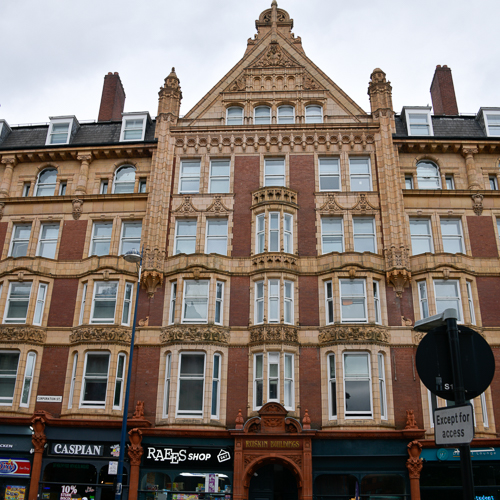
Rusking Buildings by Ewen & JA Harper – 1900s
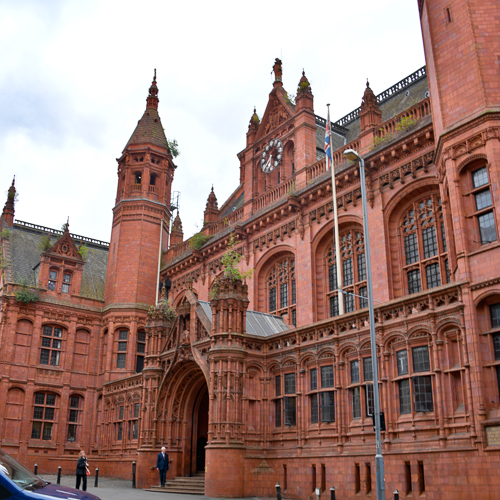
Birmingham Victoria Law Courts
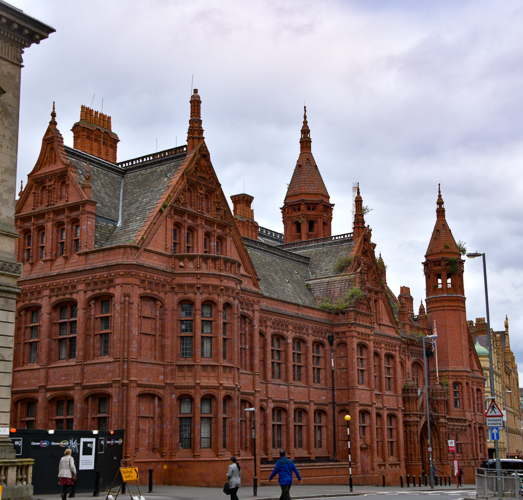
The foundation stone of the Victoria Law Courts was laid by Queen Victoria on March 23, 1887, her Golden Jubilee year. The building was designed by Aston Webb & Ingress Bell of London after an open competition. It is faced entirely in deep red terracotta from the clay of Ruabon in North Wales and covered in intricate terracotta ornamentation.
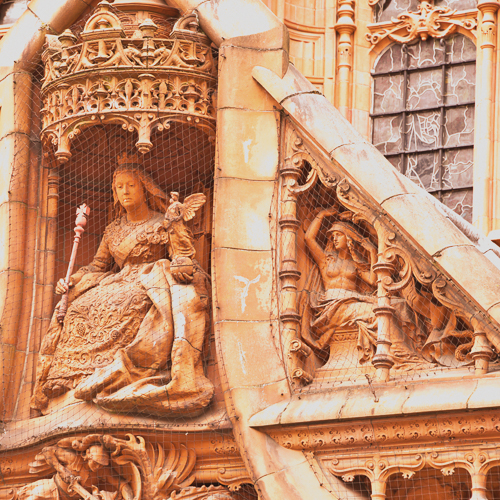 A statue of Queen Victoria by Harry Bates surmounts the main entrance.
A statue of Queen Victoria by Harry Bates surmounts the main entrance.
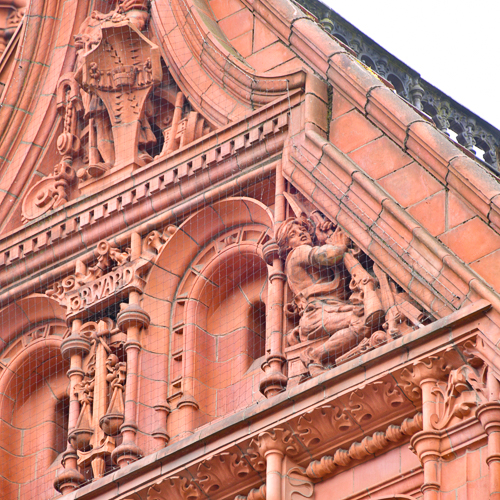
*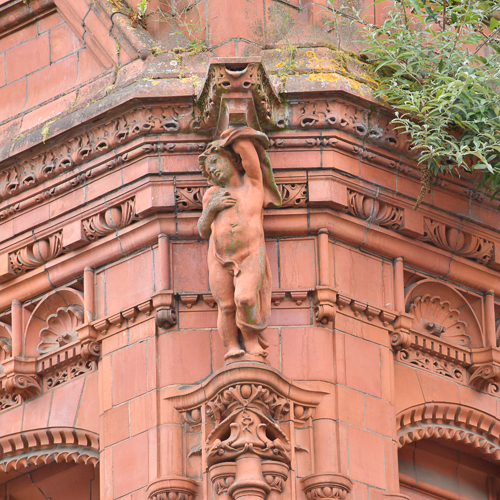
Other figures are by sculptor William Silver Frith and designed by Walter Crane.
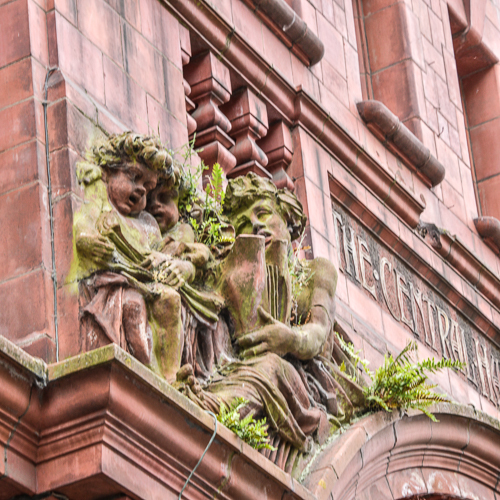
Ornamentation on Methodist Central Hall
Methodist Central Hall was built in 1903–04 by architects Ewan Harper & James A. Harper. The terracotta was manufactured by the renowned firm of Gibbs and Canning of Tamworth. The main hall seated 2,000. It had more than 30 other rooms, including three school halls. The street level had 12 bays for shops. At the time, it cost £96,165.
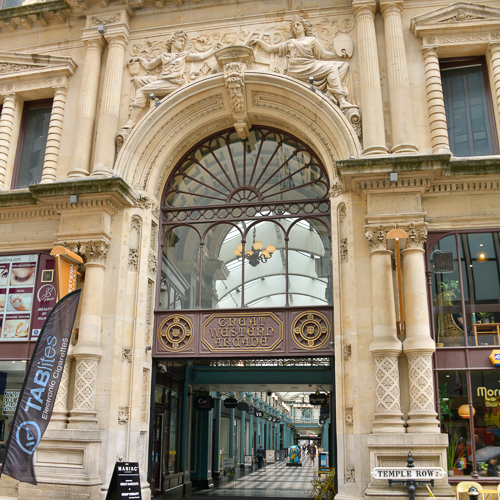
Great Western Arcade
The Great Western Arcade was built (1875-6) over the Great Western Railway line cutting at the London end of Snow Hill station. The cutting was roofed over in 1874, and the Great Western Arcade was built on top.
The arcade’s roof was originally a glazed semi-circular barrel vault with a glazed, central dome, similar to that of the Galleria Vittoria Emmanuele in Milan, which was constructed at the same time. It was destroyed during World War II and was replaced with a simpler structure.
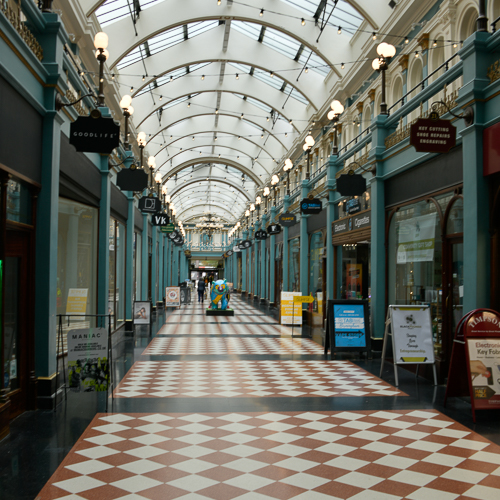
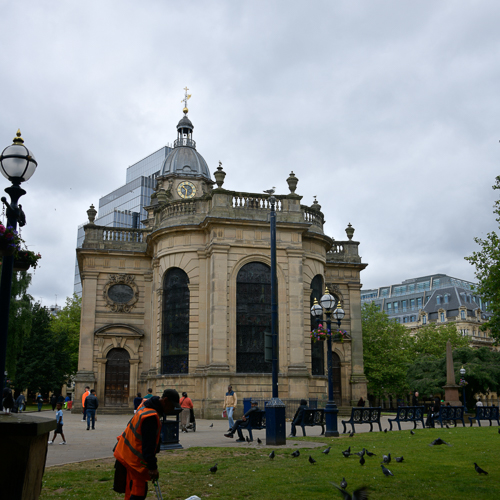
The Apse of St Philip Cathedral from the outside
The Cathedral Church of Saint Philip is a Church of England cathedral and the seat of the Bishop of Birmingham. Built as a parish church in the Baroque style by Thomas Archer, it was consecrated in 1715.
During World War II, the cathedral was bombed and gutted on November 7, 1940. Its most significant treasures, several windows by Edward Burne-Jones, had been removed in the early stages of the war by Birmingham Civic Society and were replaced, unharmed, when the building was restored in 1948.
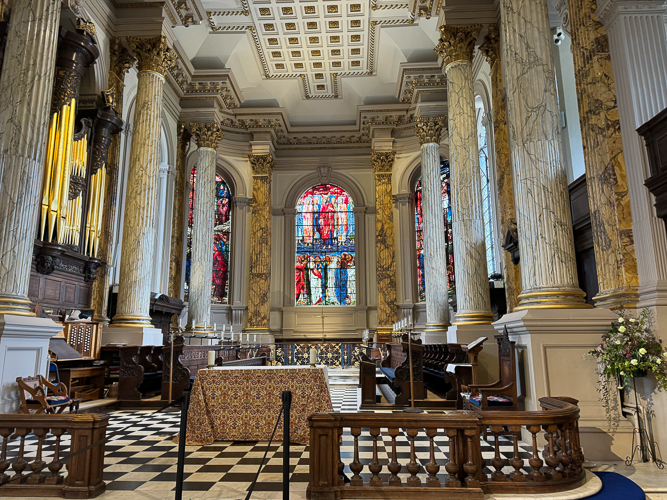
The stained-glass windows are considered among the finest in the world. The windows were created by Pre-Raphaelite artists Edward Burne-Jones along with William Morris.
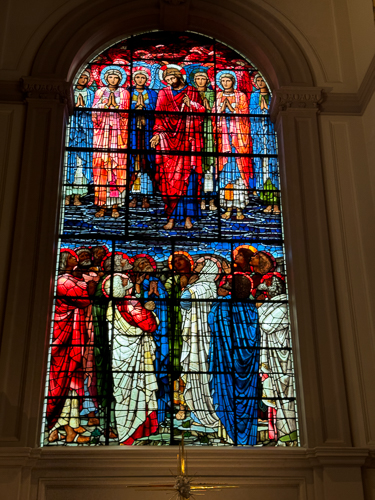
Initially, the commission was for a single stained-glass window at the central opening representing the Ascension. It was in place in 1885. Two years later, when Burne-Jones saw it for the first time, it is said that he was so overcome by the emotional impact of the finished window that he suggested designing two more windows to fill the spaces on either side. After discussion between the artist, architect, funder, Rector, and the manufacturer, it was agreed that the two further windows should represent the ‘Nativity of Christ’ and the ‘Crucifixion of Christ’.
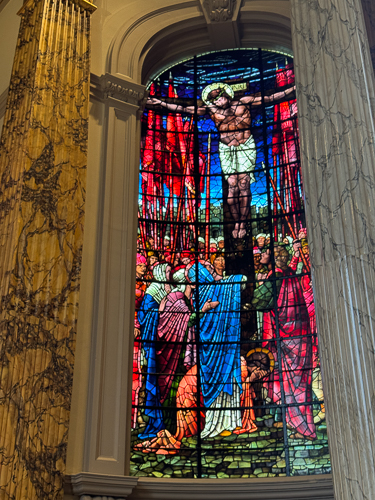
The Crucifixion 1887
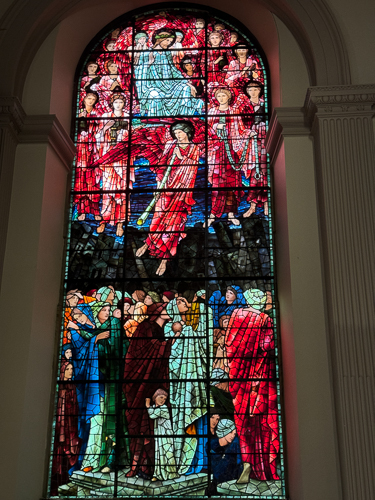
The Nativity 1887
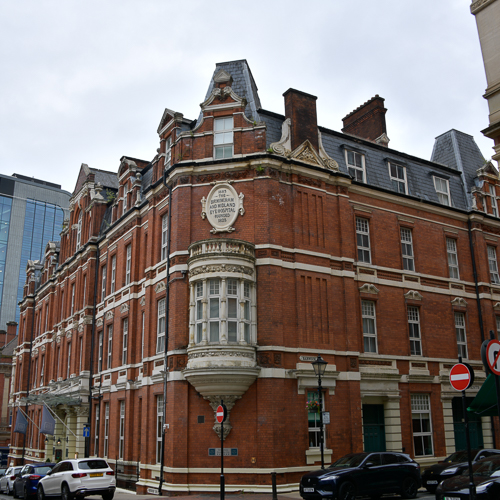
Birmingham and Midland Eye Hospital
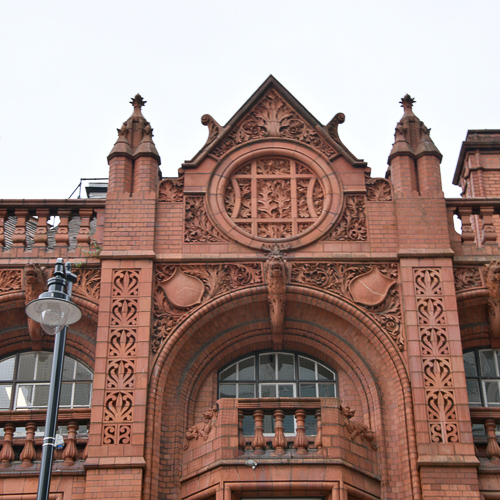
17-19 Newhall Street – The Exchange, previously known as the Bell Edison Telephone Building.
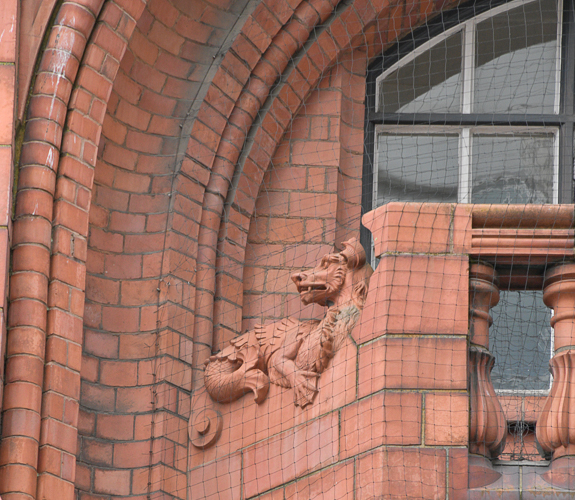
Ornamentation on 17-19 Newhall Street
Opened in 1887, the 17-19 Newhall Street was designed by Frederick Martin of the firm Martin & Chamberlain. It was constructed to house the new Central Telephone Exchange and offices for the National Telephone Company Birmingham’s central exchange, which had 5,000 subscribers and was the largest of its type in the country.
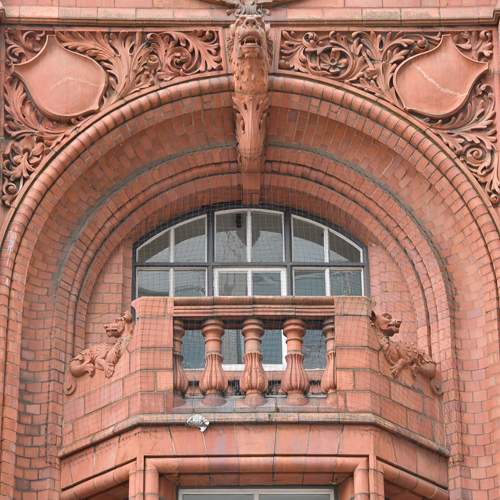
Ornamentation 17-19 Newhall Street
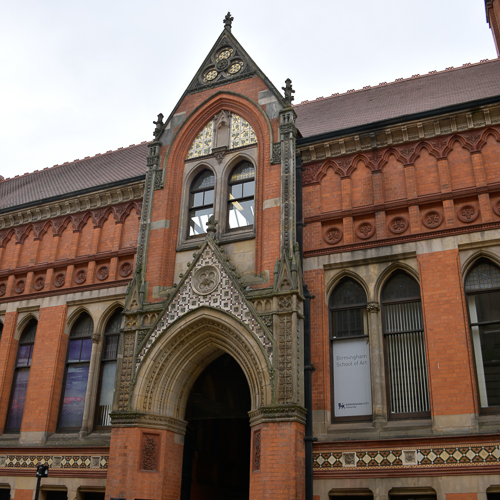
School of Art
The School of Art was the last work of J. H. Chamberlain. Chamberlain completed drawings just beofre his death in 1883 and William Morri executed his design.
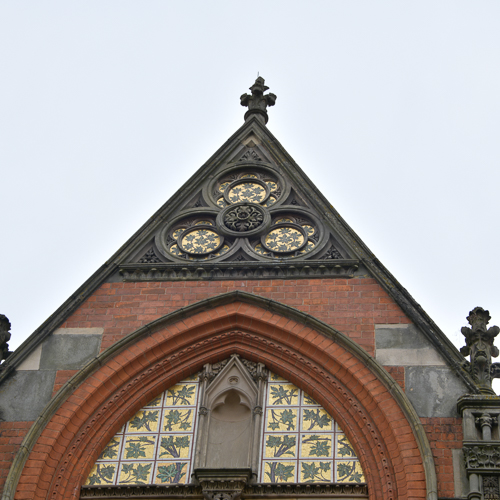
Ornamentation School of Art
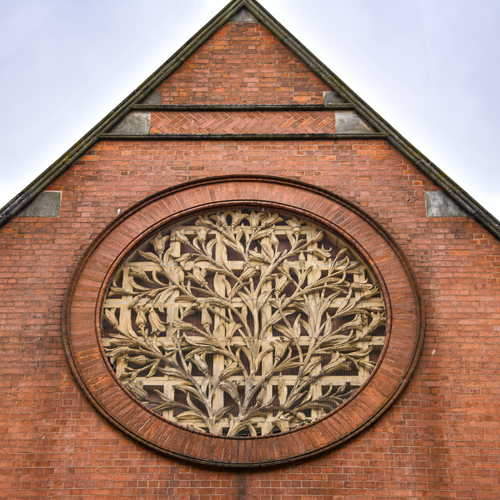
Ornamentation School of Art
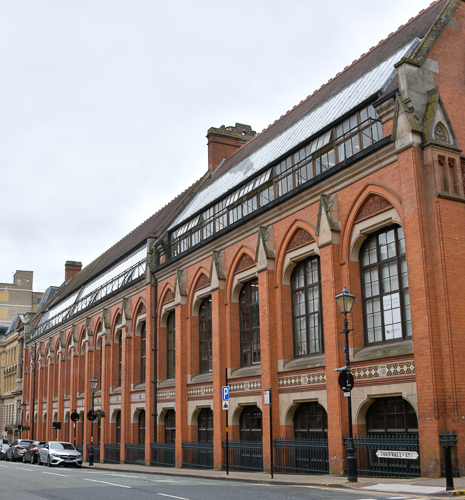
The side of the building shows the classrooms of the School of Art
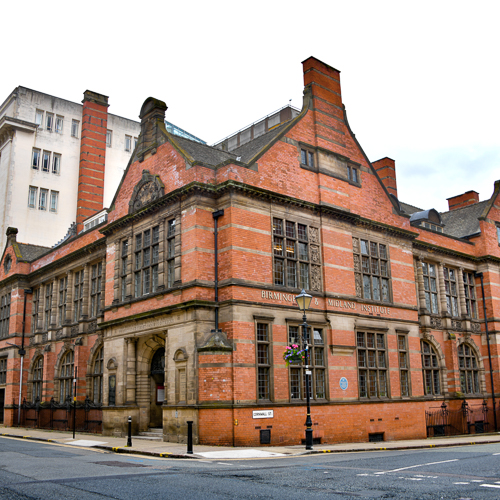
Birmingham and Midland Institute by Cassins, Peacock, and Bewlay 1899
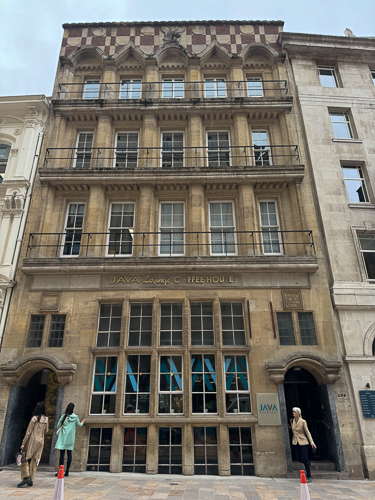
Hudsons Coffee House 122-124 Colmore Row
Built as the Eagle Insurance Offices, it was later occupied by Orion Insurance and was Hudson’s Coffee House until late 2011. Completed in 1900, it was designed in an Arts and Crafts style by William Lethaby and Joseph Lancaster Ball. Pevsner’s The Buildings of England: Warwickshire describes it as “one of the most original buildings of its date in England” and Foster’s Birmingham (Pevsner Architectural Guides) as “one of the most important monuments of the Arts and Crafts Free Style in the country.”
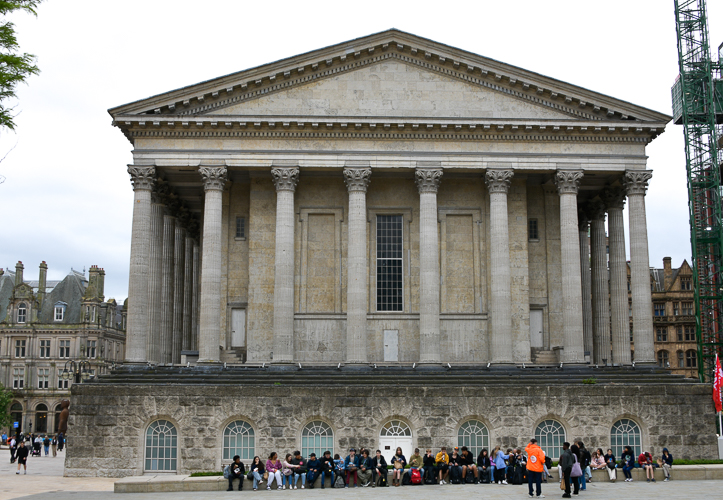
Town Hall
Birmingham’s Town Hall, built by Hansom and Welch in 1830, began as a concert hall. It is a replica of the Temple of Castor and Pollux in Rome.
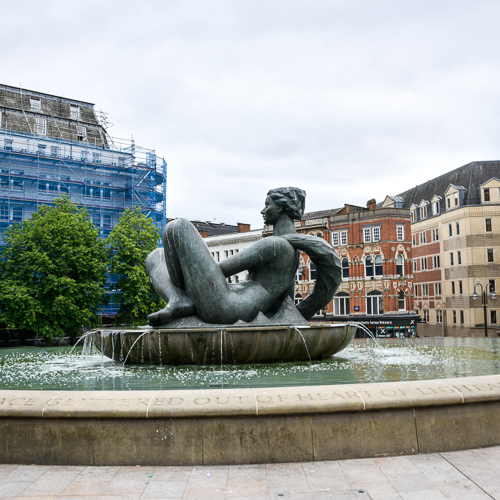
This sculpture, titled River, is found in Victoria Square. Dhruva Mistry won an international design competition for a central water feature in the square. Construction commenced in 1992 and was completed in 1994, when Diana, Princess of Wales, officially reopened the square.
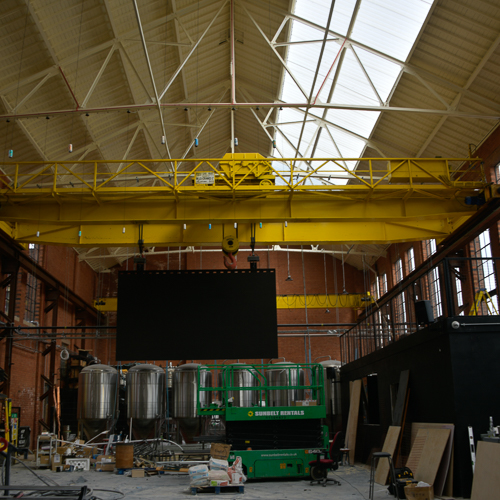
Construction of a new brewery in one of the old brick warehouses
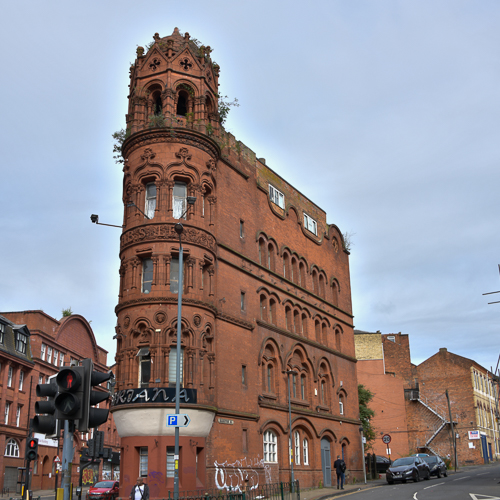
The Red Palace
Locally known as the Red Palace, it was designed in 1895 and 1896 by William Doubleday and James R. Shaw for H. B. Sale, a die-sinker firm. The original plans were for five stories, but only four were built. A fifth story was added in the mid-20th century before planning laws were in force to protect the integrity of original structures, and as a result, the fifth floor is not of the same architectural style as the 1895 building. The tower was originally built in 1896 as a memorial to Lord Roberts of Kandahar (1832–1914), who led a successful campaign in Afghanistan in 1879 before a career in India.
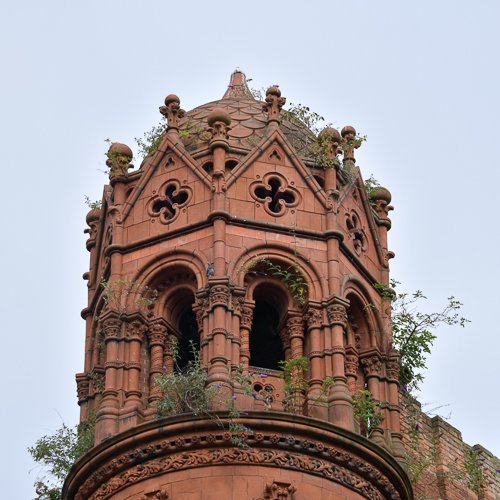
*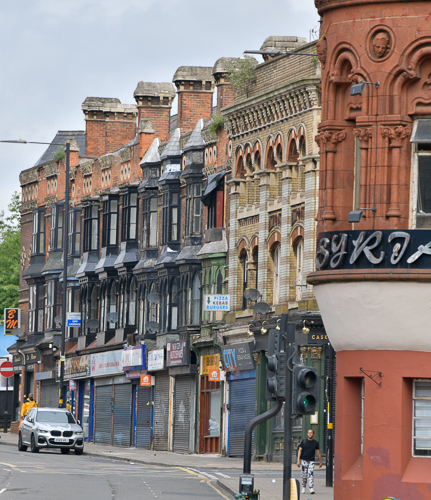 *
*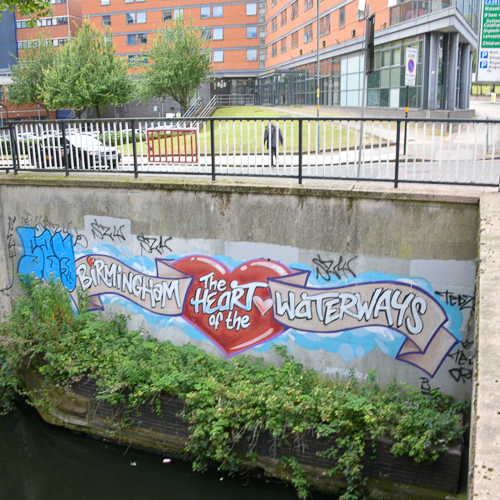
Birmingham Canal Navigations (BCN) is a network of canals connecting Birmingham, Wolverhampton, and the eastern part of the Black Country. The BCN was owned and operated by the Birmingham Canal Navigation Company from 1767 to 1948.
At its peak, the BCN contained about 160 miles of canals; today, just over 100 miles are navigable, and the majority of traffic is from tourist and residential narrowboats.
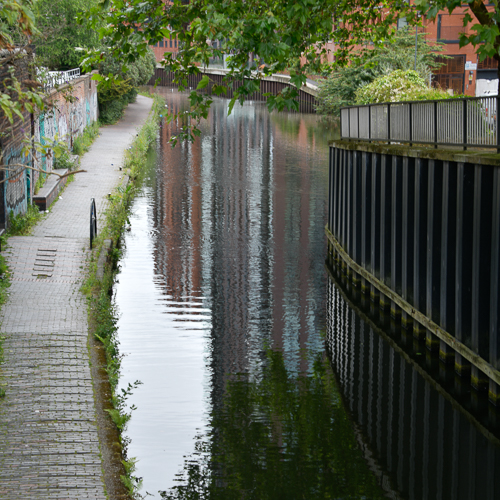
This is such a very small glimpse into the City of Birmingham in the UK. I wish I had time to explore so much more of this fascinating and extremely architecturally varied city.